Indian Cuisine
Indian cuisine encompasses a wide variety of regional and traditional cuisines native to India. Given the range of diversity in soil type, climate, culture, ethnic group and occupations, these cuisines vary significantly from each other and use locally available spices, herbs, vegetables and fruits. Indian food is also heavily influenced by religious and cultural choices and traditions.[1] There has also been Middle Eastern and Central Asian influence on North Indian cuisine from the years of Mughal rule.[2] Indian cuisine has been and is still evolving, as a result of the nation's cultural interactions with other societies.[3][4]
Historical incidents such as foreign invasions, trade relations and colonialism have played a role in introducing certain foods to the country. For instance, thepotato, a staple of the diet in some regions of India, was brought to India by the Portuguese, who also introduced chillies and breadfruit.[5] Indian cuisine has shaped the history of international relations; the spice trade between India and Europe was the primary catalyst for Europe's Age of Discovery.[6] Spices were bought from India and traded around Europe and Asia. Indian cuisine has influenced other cuisines across the world, especially those from Middle East, North Africa, Sub-Saharan Africa, Southeast Asia, the British Isles, Fiji, and the Caribbean.
Regional cuisines
Cuisine differs across India's diverse regions as a result of variation in local culture, geographical location (proximity to sea, desert, or mountains) and economics. It also varies seasonally, depending on which fruits and vegetables are ripe.
Andaman and Nicobar Islands[edit]
Seafood plays a major role in the cuisine of the Andaman and Nicobar Islands.[28] Since the indigenous Andamanesetraditionally had very little contact with the outside world, raw fish and fruits have long been a staple diet for them. Immigration from mainland of India, however, has resulted in variations in the cuisine.
Andhra Pradesh
Main article: Telugu cuisine
The cuisine of Andhra Pradesh belongs to the two Telugu-speaking regions of Rayalaseema and Coastal Andhra and is part of Telugu cuisine. The food of Andhra Pradesh is known for its heavy use of spices and, similar to South Indiancuisine, the use of tamarind. Seafood is common in the coastal region of the state. Rice is the staple food (as is with all South Indian states) eaten with lentil preparations like Pappu (dal) and Pulusu (Stew) and spicy vegetables or curries. In Andhra, leafy greens or vegetables like bottle-gourd and eggplant are usually added to dal. Pickles are an essential part of the local cuisine; popular among those are mango-based pickles like avakaya and maagaya, gongura (a pickle made from red sorrel leaves).,[29] usirikaya (gooseberry or amla), nimmakaya (lime) and tomato pickle. Yogurt is a common addition to meals, as a way of tempering spiciness. Breakfast items includedosa, pesarattu (mung bean dosa), vada, and idli.
Arunachal Pradesh
Main article: Cuisine of Arunachal Pradesh
The staple food of Arunachal Pradesh is rice, along with fish, meat and leaf vegetables.[30] Many varieties of rice are used.Lettuce is the most common vegetable, usually prepared by boiling with ginger, coriander and green chillies.[31] Boiled rice cakes wrapped in leaves are a popular snack. Thukpa is a kind of noodle soup common among the Monpa tribe of the region.[32] Native tribes of Arunachal are meat eaters and use fish, eggs, beef, chicken, pork and mutton to make their dishes. Apong or rice beer made from fermented rice or millet is a popular beverage in Arunachal Pradesh and is consumed as a refreshing drink.[33]
Assam
Main article: Assamese cuisine
Assamese cuisine is a mixture of different indigenous styles, with considerable regional variation and some external influences. Although it is known for its limited use of spices,[34] Assamese cuisine has strong flavours from its use of endemic herbs, fruits, and vegetables served fresh, dried or fermented. Fish is widely eaten. Other Non-vegetarian items include chickens, ducks, pigeons, snails, silkworms, insects, mutton, pork, venison and turtle. The region's cuisine involves simple cooking processes, mostly barbecuing, steaming, boiling or fermenting. Bhuna, the gentle frying of spices before the addition of the main ingredients, generally common in Indian cooking, is absent in the cuisine of Assam. A traditional meal in Assam begins with a khar, a class of dishes named after the main ingredient and ends with a tenga, a sour dish. As one goes through an Assamese meal, one is taken through a range of pH, starting from alkaline (khar) and ending in acidic (tenga). Homebrewed rice beer or rice wineis served before a meal. The food is usually served in bell metal utensils.[35] Paan, the practice of chewing betel nut, generally concludes a meal.[36]
Bihar[edit]
Main article: Bihari cuisine
See also: Bhojpuri cuisine and Mithila (India)
Bihari cuisine is wholesome and simple. Litti chokha, a baked salted wheat flour cake filled with sattu (baked chickpea flour) and some special spices, is well known among the middle-class families served with "Baigan Bharta", made out of roasted eggplant and tomatoes. [37][38] Among meat dishes, Meat saalan is a popular dish made of mutton or goat curry with cubed potatoes in garam masala. Dalpuri is another popular dish in Bihar. It is salted wheat flour bread, filled with boiled, crushed and fried gram pulses. Malpua is a popular sweet dish of Bihar, prepared by a mixture of maida, milk, bananas, cashew nuts, peanuts, raisins, sugar, water and green cardamom. Another notable sweet dish of Bihar is Balushahi, which is prepared by a specially treated combination of maida and sugar along with ghee and the other worldwide famous sweet Khaja also very popular, made from flour, vegetable fat and sugar which is mainly used in wedding and other occasion. Silav is a place near to Nalanda famous for production. During the festival of Chhath,thekua, a sweet dish made of ghee, jaggery, and whole-meal flour, flavoured with aniseed, is made.[37]
Chandigarh[edit]
Chandigarh, the capital of Punjab and Haryana is a city of 20th century origin with a cosmopolitan food culture mainly involving North Indian cuisine.
People enjoy home-made recipes such as Paratha, especially at breakfast, and other Punjabi foods like Roti made from corn flour (Makki) with Sarson da saag. Dal makhani is well known dish among others.[39] Popular snacks include Gol Gappa(known as Panipuri in other places). It consists of a round, hollow puri, fried crisp and filled with a mixture of flavoured water among other ingredients.
Chhattisgarh[edit]
Chhattisgarh cuisine uses many foods not found in the rest of India, although the staple food is rice, like in much of the country. Many Chhattisgarhi people drink liquor brewed from the Mahuwa flower.[40] The tribal people of the Bastar region of Chhattisgarh eat whatever is available: Baasi(left over rice), mushrooms, bamboo pickle, bamboo vegetables, etc.[41][42]
Dadra and Nagar Haveli[edit]
The local cuisine shows resemblances with the cuisine of Gujarat. Ubadiyu is a local delicacy made up of vegetables and beans with herbs. The common foods include rice, roti, vegetables, river fishes and crab. People also enjoy buttermilk and chutney made up of different fruits and herbs.[43]
Daman and Diu[edit]
Daman and Diu is a union territory of India which, like Goa, was a former colonial possession of Portugal. Consequently, both native Gujarati food and traditional Portuguese food are common. Being a coastal region, the communities are mainly dependent on seafood. Normally, Rotli and tea are taken for breakfast, Rotla and saag for lunch, and chokha along withsaag and curry are taken for dinner. Some of the dishes prepared on festive occasions include puri, lapsee, potaya, dudh-plag, and dhakanu.[44] While alcohol is prohibited in the neighbouring state of Gujarat, drinking is common in Daman and Diu. All popular brands of alcohol are readily available.
Delhi[edit]
Delhi was once the capital of the Mughal Empire, and it became the birthplace ofMughlai cuisine. Delhi is noted for its street food. The Paranthewali Gali in Chandani Chowk is just one of the culinary landmarks for stuffed flatbread (Paranthas). Delhi has people from different parts of India and thus the city has different types of food traditions its cuisine is influenced by from the various cultures. Punjabi cuisine is common, due to the dominance of Punjabi communities.[45] Delhi cuisine is actually an amalgam of different Indian cuisines modified in unique ways. This is apparent in the different types of street food available. Kababs, kachauri, chaat, Indian sweets, Indian ice cream (commonly called kulfi), and even western food items like sandwiches and patties are prepared in a style unique to Delhi and are immensely popular.[46] .
Goa[edit]
Main article: Goan cuisine
See also: Saraswat cuisine and Malvani cuisine
The area has a tropical climate, which means the spices and flavours are intense. Use of kokum is a distinct feature of the region's cuisine. Goan cuisine is mostly seafood and meat-based; the staple foods are rice and fish. Kingfish (Vison or Visvan) is the most common delicacy, and others include pomfret, shark, tuna, andmackerel; these are often served with coconut milk.[47] Shellfish, including crabs,prawns, tiger prawns, lobster, squid and mussels are commonly eaten. The cuisine of Goa is influenced by its Hindu origins, four hundred years of Portuguese colonialism, and modern techniques.[47][48] Bread, introduced by the Portuguese, is very popular, and is an important part of goan breakfast. Frequent tourism in the area gives Goan food an international aspect. Vegetarianism is equally popular.[49]
Gujarat[edit]
Main article: Gujarati cuisine
Gujarati cuisine is primarily vegetarian. The typical Gujarati thali consists of roti (rotliin Gujarati), daal or kadhi, rice, sabzi/shaak, papad and chaas (buttermilk). Thesabzi is a dish of different combinations of vegetables and spices which may be stir fried, spicy or sweet.[50] Gujarati cuisine can vary widely in flavour and heat based on personal and regional tastes. North Gujarat, Kathiawad, Kachchh, and South Gujarat are the four major regions of Gujarati cuisine.[51] Many Gujarati dishes are simultaneously sweet, salty (like Vegetable Handva), and spicy. In mango season,keri no ras (fresh mango pulp) is often an integral part of the meal. Spices also vary seasonally. For example, garam masala is used less in summer. Regular fasting, with diets limited to milk, dried fruit, and nuts, is a common practice.[52]
Haryana[edit]
Cattle being common in Haryana, dairy products are a common component of its cuisine.[53][54] Specific dishes include kadhi, pakora, besan masala roti, bajra aloo roti, churma, kheer, bathua raita, methi gajar, singri ki sabzi, and tamatar chutney.
Lassi, sharbat, and nimbu pani are three popular non-alcoholic beverages in Haryana. Liquor stores are common there, which cater to a large number of truck drivers.[55]
Himachal Pradesh[edit]
Main article: Culture of Himachal Pradesh § Cuisine
The daily diet of Himachal people is similar to that of the rest of North India, including lentils, broth, rice, vegetables, and bread, although non-vegetarian cuisine is preferred. Some of the specialities of Himachal include sidu, patande, chukh, rajmah and til chutney.[56]
Jammu and Kashmir[edit]
Main article: Cuisine of Kashmir
The cuisine of Jammu and Kashmir is from three regions of the state Jammu, Kashmir and Ladakh. Kashmiri cuisine has evolved over hundreds of years. Its first major influence was the food of the Kashmiri Hindus and Buddhists. The cuisine was later influenced by the cultures which arrived with the invasion of Kashmir byTimur from the area of modern Uzbekistan. Subsequent influences have included the cuisines of Central Asia and the North Indian plains. The most notable ingredient in Kashmiri cuisine is mutton, of which there are over 30 varieties.[57]Wazwan is a multicourse meal in the Kashmiri Muslim tradition, the preparation of which is considered an art.[58]
Kashmiri Pandit food is elaborate, and an important part of the Pandits' ethnic identity. Kashmiri Pandit cuisine usually uses yogurt, oil, and spices such as turmeric, red chilli powder, cumin, ginger, andfennel, though they do not use onion and garlic.[59]
Jharkhand[edit]
Main article: Traditional cuisine of Jharkhand
Traditional Jharkhand dishes are not available at restaurants, as they have not been commercialised.[citation needed] Prepared exclusively in tribal regions, this cuisine uses oil and spices infrequently, except for pickle production and special occasions.Baiganee Chop, a snack made of brinjal slices or eggplant, is popular in Jharkhand. Thekua is a sweet dish made of sugar, wheat, flour and chopped coconuts. Hadia, which is made out of paddy rice is a refreshing drink.[60] A wide variety of recipes are prepared with different types of rice in Jharkhand, including recipes like Dhuska, Pittha, and different kinds of Rotis prepared with rice.
Karnataka[edit]
Main article: Cuisine of Karnataka
Karnataka has a rich history of food. A number dishes like Idly, Rava Idly, MysoreMasala Dosa etc. were invented here which have become popular beyond the state of Karnataka. Equally, varieties in the cuisine of Karnataka has similarities with its three neighbouring South Indian states, as well as the states of Maharashtra and Goa to its North. It is very common for the food to be served on a banana leaf especially during festivals and functions.
Karnataka cuisine can be very broadly divided into: 1) Mysore/Bangalore cuisine, 2) North Karnataka cuisine, 3) Udupi cuisine, 4) Kodagu/Coorg cuisine and, 5) Karavali/coastal cuisine. The cuisine covers a wide spectrum of food from pure vegetarian and vegan to meats like pork and, from savouries to sweets. Typical dishes include bisi bele bath, jolada rotti, badanekai yennegai, Holige, Kadubu,chapati, idli vada, ragi rotti, akki rotti, saaru, huli, kootu, vangibath, khara bath,kesari bhath, sajjige, Neer Dosa, Mysoore Pak, Haal Bai,chiroti, benne dose, ragi mudde, and uppittu.
The Kodagu district is known for spicy pork curries,[61] while coastal Karnataka specialises in seafood. Although the ingredients differ regionally, a typicalKannadiga Oota (Kannadiga meal) is served on a banana leaf. The coastal districts of Dakshina Kannada and Udupi have slightly varying cuisines, which make extensive use of coconut in curries and frequently include seafood.[62][63]
Kerala[edit]
Main article: Cuisine of Kerala
Traditional Kerala food is vegetarian(Non-vegetarian in most Malabar area) and includes Kerala Sadhya, which is an elaborate banquet prepared for festivals and ceremonies but contemporary Kerala food also includes Non-vegetarian dishes. A full-course Sadya, which consits of rice with about twenty different accompaniments and desserts is the ceremonial meal of Kerala eaten usually on celebrations like marriages, Onam, Vishu, etc. and is served on a plantain leaf.
Fish and seafood plays a major role in Kerala cuisine as Kerala is a coastal state. An everyday Kerala meal in most household consist of Rice with fish curry made of Sardines, Mackerel, Seer fish, King fish, Pomfret, Prawns, Shrimp, Sole fish, anchovy, Parrot Fish etc. Mussels, oysters, crabs, squid, scallops etc. are not rare. As Kerala has large inland water bodies, river fish and lake fishes are abundant, and constitute in regular meals.
It is common in Kerala to have a breakfast with non-vegetarian dishes, contradicting to other states in India. Chicken/Mutton stews, lamb/chicken/beef/pork/egg curry, fish curry with tapioca for breakfast are common. A wide range of breakfast with non-vegetarian is common in Malabar and in Central Kerala.
Kerala cuisine[64] reflects its rich trading heritage. Over time various cuisines have blended with indigenous dishes while foreign ones have been adapted to local tastes. Significant Arab, Syrian, Portuguese, Dutch, Jewish and Middle Easterninfluence exists in this region's cuisine, through ancient trade routes via the Arabian Sea and through Arab traders who settled here, contributed to the evolution ofKozhikodan Halwa along with other dishes like the Thalassery biryani.
Coconuts grow in abundance in Kerala, so grated coconut and coconut milk are commonly used for thickening and flavouring.[65] Kerala's long coastline and numerous rivers have led to a strong fishing industry in the region, making seafood a common part of the meal. Rice is grown in abundance; along with tapioca. It is the main starch ingredient used in Kerala's food.[66]
Having been a major production area of spices for thousands of years, the region makes frequent use of black pepper, cardamom, clove, ginger, and cinnamon. Most of Kerala's Hindus, except its Brahmin community, eat fish, chicken, beef, pork, eggs and mutton.[67] The Brahmin is famed for its vegan cuisine, especially varieties of Sambar and Rasam. A thick vegetable stew popular in South and Central India called Avial is believed to have originated in Southern Kerala. Avial is a widely eaten vegetarian dish in the state and plays a major role in Sadya.
In most Kerala households, a typical meal consists of rice, fish, and vegetables. Kerala also has a variety of breakfast dishes like idli, dosa, appam, idiyappam, puttu, and pathiri.[68] The Muslim community of Kerala blend Arabian, North Indianand indigenous Malabari cuisines, using chicken, eggs, beef and mutton.[69]Thalassery biryani is the only biryani variant, which is of Kerala origin having originated in Talassery, in Malabar region. The dish is significantly different from other biryani variants.[70]
The Pathanamthitta region is known for Kaalan and fish curries. Appam along with wine and curries of cured beef and pork are popular among Syrian Christians in Central Kerala.
Popular desserts are payasam and Halwa. The Hindu community's payasams, especially those made at temples, like theAmbalappuzha temple, are famous for their rich taste. Halva is one of the most commonly found or easily recognised sweets in bakeries throughout Kerala and Kozhikode in Kerala, is famous for its unique and exotic 'haluva', which is popularly known as Kozhikodan Haluva. Europeans used to call the dish "sweetmeat" due to its texture, and a street in Kozhikode where became named Sweet Meat Street during colonial rule. Kozhikodan haluva is mostly made from maida(highly refined wheat), and comes in various flavours, such as banana, ghee or coconut. However, karutha haluva (black haluva) made from rice is also very popular. Many Muslim families in the region are famed for their traditional karutha haluva.
Lakshadweep[edit]
Cuisines of Lakshadweep consist of sea food with a touch of coconut. Local food of Lakshadweep consists of spicy non-vegetarian and vegetarian dishes. The culinary influence of Kerala is quite evident in the cuisines of Lakshadweep, since the island lies in close proximity to Kerala. Coconut and sea fish serve as the foundations of most of the meals. The people of Lakshadweep drink large amounts of coconut water, which is the most abundant aerated drink on the island. Coconut milk is the base for most of the curries. All the sweet or savory dishes have a touch of famous Malabar spices. Local people also prefer to have dosa, idlis, and various rice dishes.[71]
Madhya Pradesh[edit]
The cuisine in Madhya Pradesh varies regionally. Wheat and meat are common in the North and West of the state, while the wetter South and East are dominated by rice and fish. Milk is a common ingredient in Gwalior and Indore. The street food of Indore is renowned, with shops that have been active for generations.[72] Bhopal is known for meat and fish dishes such as rogan josh, korma, qeema, biryani, pilafand kebabs. There is a street named "Chatori Gali" in old Bhopal where one can find traditional Muslim non-vegetarian fare like Paya Soup, Bun Kabab, and Nalli-Nihari as some of the specialties.[73]
Dal bafla is a common meal in the region and can be easily found in Indore and other nearby regions, consisting of a steamed and grilled wheat cake dunked in rich ghee, which is eaten with daal and ladoos. The culinary specialty of the Malwa and Indore regions of central Madhya Pradesh is poha (flattened rice); usually eaten at breakfast with jalebi.[74] Beverages in the region include lassi, beer, rum andsugarcane juice. A local liquor is distilled from the flowers of the mahua tree. Date palm toddy is also popular. In tribal regions, a popular drink is the sap of the sulfi tree, which may be alcoholic if it has gone through fermentation.
Maharashtra[edit]
Main article: Maharashtrian cuisine
Maharashtrian cuisine is an extensive balance of many different tastes. It includes a range of dishes from mild to very spicy tastes. Bajri, wheat, rice, jowar, vegetables, lentils, and fruit form important components of the Maharashtrian diet. Popular dishes include puran poli, ukdiche modak, batata wada, sabudana khichdi, masala bhat, pav bhaji and wada pav.[75] Poha or flattened rice is also usually eaten at breakfast. Kanda poha and aloo poha are some of the dishes cooked for breakfast and snacking in evenings. Popular spicy meat dishes include those that originated in the Kolhapur region. These are the Kolhapuri Sukka mutton, pandhra rassa, and tabmda rassa. Shrikhand, a sweet dish made from strained yogurt, is a main dessert of Maharashtrian cuisine.[76] The cuisine of Maharashtra can be divided into two major sections—the coastal and the interior. The Konkan, on the coast of theArabian Sea, has its own type of cuisine, a homogeneous combination of Malvani,Goud Saraswat Brahmin, and Goan cuisines. In the interior of Maharashtra, theVidarbha and Marathwada areas have their own distinct cuisines. The cuisine ofVidarbha uses groundnuts, poppy seeds, jaggery, wheat, jowar, and bajraextensively. A typical meal consists of rice, roti, "poli" or '"bhakar", along with "varan" and "aamtee"—lentils and spiced vegetables. Cooking is common with different types of oil. People love spicy food. Savji food from Vidarbha is well known all over Maharashtra. Savji dishes are very spicy and oily. Savji mutton curries are very famous. Like other coastal states, there is an enormous variety of vegetables, fish and coconuts, where they are common ingredients. Peanuts and cashews are often served with vegetables. Grated coconuts are used to flavour many types of dishes, but coconut oil is not widely used; peanut oil is preferred.[77] Kokum, most commonly served chilled, in an appetiser-digestive called sol kadhi, is prevalent. During summer, Maharashtrians consume panha, a drink made from raw mango.[78][79]
Malawani[edit]
| This section does not cite any sources. (April 2016) (Learn how and when to remove this template message) |
Malwani cuisine is a specialty of the tropical area which spans from the shore of Devagadh Malwan to Sawantwadi. The unique taste and flavor of Malwani cuisine comes from Malwani masala and use of coconut and kokam. The staple foods are rice and fish. Various kinds of red and green fish, prawns, crab and shell fish curries (also called mashacha sar in the Malwani language) are well known along with kombadi (chicken) wade and mutton prepared Malwani style. Mohari mutton is also one of the distinct delicacies of Malwani cuisine.
A large variety of fish are available in the region, which include surmai, karali, bangada, bombil(Bombay duck), paplet(pompret), halwa, tarali, suandale, kolambi (prawns), tisari (shell fish), kalwa (stone fish) and kurli (crab).
All these fish are available in dried forms including prawns, which are known as sode. Local curries and chatanis are also prepared with dried fish.
Different types of rice breads and pancakes add to the variety of Malwani cuisine and include tadlachi bhakari, ghawane, amboli, patole, appe, tandalachi and shavai (rice noodles). These rice breads can be eaten specially flavored with coconut milk, fish curries and chicken or mutton curries.
Sole kadi made from kokam and coconut milk is a signature appetizer drink .
For vegetarians, Malwani delicacies include alloochi bhaji, alloochi gathaya, kalaya watanyacha and sambara (black gram stew)
The sweets and desserts include ukadiche modak, Malawani khaje, khadakahde kundiche ladu (laddues), shegdanyache ladu, tandalchi kheer and tandalachi shavai ani ras (specially flavored with Coconut milk).
Manipur[edit]
Main article: Manipuri cuisine
Manipuri cuisine is represented by the cuisine of the Meitei people who form the majority population in the central plain. Meitei food are simple,tasty,organic and healthy. Rice with local seasonal vegetables and fish form the main diet. Most of the dishes are cooked like vegetable stew, flavored with either fermented fish called ngari, or dried and smoked fish. The most popular manipuri dish is the iromba; it's a preparation of boiled and mashed vegetables, often including potatoes or beans, mixed with chilli and roasted fermented fish. Another popular dish is the savory cake called Paknam, made of a base of lentil flour stuffed with various ingredients such as banana inflorescence, mushrooms, fish, vegetables etc, and baked covered in turmeric leaves. Along with spicy dishes, a mild side dish of steamed or boiled sweet vegetables are often served in the daily meals. The manipuri salad dish called singju, made of finely julienned cabbage, green papaya, and other vegetables, and garnished with local herbs, toasted sesame powder and lentil flour is extremely popular locally, and often found sold in small street side vendors. Singju is often served with bora which are fritters of various kinds, and also kanghou, or oil fried spicy veggies. Cooked and fermented soybean is a popular condiment in all manipuri kitchens. The staple diet of Manipur consists of rice, fish, large varieties of leafy vegetables (of both aquatic and terrestrial). Manipuris typically raise vegetables in a kitchen garden and rear fishes in small ponds around their house. Since the vegetables are either grown at home or obtained from local market, the cuisines are very seasonal, each season having its own special vegetables and preparations. The taste is very different from mainland Indian cuisines because of the use of various aromatic herbs and roots that are peculiar to the region. They are however very similar to the cuisine of South China.
Meghalaya[edit]
Main article: Meghalayan cuisine
Meghalayan cuisine is unique and different from other Northeastern Indian states.[80] Spiced meat is common, from goats, pigs, fowl, ducks, chickens, and cows. In the Khasi and Jaintia Hills districts, common foods include jadoh, ki kpu, tung-rymbai, and pickled bamboo shoots. Other common foods in Meghalaya include minil songa (steamed sticky rice), sakkin gata, and momo dumplings. Like other tribes in the northeast, the Garos ferment rice beer, which they consume in religious rites and secular celebrations.[81]
Mizoram[edit]
The cuisine of Mizoram differs from that of most of India, though it shares characteristics to other regions of Northeast Indiaand North India. Rice is the staple food of Mizoram, while Mizos love to add non-vegetarian ingredients in every dish. Fish, chicken, pork and beef are popular meats among Mizos. Dishes are served on fresh banana leaves. Most of the dishes are cooked in mustard oil. Meals tend to be less spicy than in most of India. Mizos love eating boiled vegetables along with rice. A popular dish is bai, made from boiling vegetables (spinach, eggplant, beans, and other leafy vegetables) with bekangfermented soya beans or Sa-um, a fermented pork and served with rice. Sawhchiar is another common dish, made of rice and cooked with pork or chicken.[82][83]
Nagaland[edit]
Main article: Naga cuisine
The cuisine of Nagaland reflects that of the Naga people. It is known for exotic pork meats cooked with simple and flavourful ingredients,[84] like the extremely hot Bhut jolokia pepper, fermented bamboo shoots and akhuni or fermented soya beans. Another unique and strong ingredient used by the Naga people, is the fermented fish known as ngari. Fresh herbs and other local greens also feature prominently in the Naga cuisine. The Naga use oil sparingly, preferring to ferment, dry, and smoke their meats and fish. Traditional homes in Nagaland have external kitchens that serve as smokehouses.[85]
A typical meal consists of rice, meat, a chutney, a couple of stewed or steamed vegetable dishes - flavored with ngari or akhuni. Desserts usually consist of fresh fruits.
Odisha[edit]
Main article: Oriya cuisine
The cuisine of Odisha relies heavily on local ingredients. Flavours are usually subtle and delicately spiced, unlike the spicy curries typically associated with Indian cuisine. Fish and other seafood, such as crab and shrimp, are very popular, and chicken and mutton are also consumed. Panch phutana, a mix of cumin, mustard, fennel, fenugreek and kalonji (nigella), is widely used for flavouring vegetables anddals,[86] while garam masala and turmeric are commonly used for meat-based curries. Pakhala, a dish made of rice, water, and yogurt, that is fermented overnight, is very popular in summer in rural areas.[87] Oriyas are very fond of sweets, sodessert follows most meals.
Few popular Oriya cuisines, Anna, Kanika, Dalma, Khata (Tamato & Oou), Dali (Different types of lentils, i.e. Harada (Red Gram), known as Arhar in Hindi), Muga (Moong), Kolatha (Horsegram), etc. And many more varieties both in Veg. (Niramisha) & Non-Veg. (Aamisha). Saga ( spinach and other green leaves) and Alu-bharta(mashed potato) along with Pakhala are popular dishes(lunch) in rural Odisha.
Puducherry[edit]
The union territory of Puducherry was a French colony for around 200 years, making French cuisine a strong influence on the area. Tamil cuisine is followed by majority of the people as its major population is Tamil. The influence of the neighbouring areas, such as Andhra Pradesh and Kerala, is also visible on the territory's cuisine. Some favourite dishes include coconut curry, tandoori potato, soya dosa, podanlangkai, curried vegetables, stuffed cabbage, and baked beans.[88]
Punjab[edit]
Main article: Punjabi cuisine
The cuisine of Punjab is known for its diverse range of dishes. Home-cooked and restaurant Punjabi cuisine can vary significantly. Restaurant-style Punjabi cooking uses large amounts of ghee, butter and cream, while home-cooked equivalents center around whole wheat, rice, and other ingredients flavoured with masala.[89]Regional differences also exist in Punjabi cuisine. For example, people of Amritsarprefer stuffed paratha and dairy products. Ambar Panjabi of Amritsar created the well known lentil and bean sprout curry which swept the nation with its zesty flavor and texture.[90] Certain dishes are exclusive to Punjab, such as makke di roti andsarson da saag.[91] The main masala in a Punjabi dish consists of onion, garlic and ginger. Much of this food was made to meet the demands of traditional Punjabi lifestyle, with high calorie counts to support rural workers. Tandoori food is a Punjabi speciality, especially with non-vegetarian dishes. Other common meat dishes in this region are Bhakra curry (Goat) and fish dishes[92] Dairy products are heavily consumed and usually accompany main meals, these are yogurt, milk, and milk derived products such as Lassi.
No description of Punjabi cuisine is complete without the myriad of famous desserts, such as kheer (milk based rice pudding), carrot halwa, sooji (cream of wheat) halwa, gulab jamun (milk dough balls soaked in a sugar syrup) and jalebi (funnel cakes soaked in a sugar syrup). Most desserts are ghee and/or dairy based and tend to be very sweet.
Many of the most popular elements of Anglo-Indian cuisine, such as tandoori foods, naan, pakoras and vegetable dishes with paneer, are derived from Punjabi styles.[93] Punjabi food is well liked the world over and one of the most popular cuisine's from the sub continent.
Rajasthan[edit]
Main article: Rajasthani cuisine
Cooking in Rajasthan, an arid region, has been strongly shaped by the availability of ingredients. Because water is at a premium, food is generally cooked in milk orghee, making it quite rich. Gram flour is a mainstay of Marwari food mainly due to the scarcity of vegetables in the area.[94]
Historically, food that could last for several days and be eaten without heating was preferred. Major dishes of a Rajasthani meal may include daal-baati, tarfini, raabdi,Ghevar, bail-gatte, panchkoota, chaavadi, laapsi, kadhi and boondi. Typical snacksinclude bikaneri bhujia, mirchi bada, Pyaaj Kachori, and Dal Kachori.
Daal-baati is the most popular dish prepared in the state. It is usually supplemented with choorma, a mixture of finely ground baked rotis, sugar and ghee.[95]
Rajasthan is also influenced by the Rajputs who were predominantly non vegetarians. Their diet consisted of game meat and gave birth to dishes like laal maas, safed maas, khad khargosh and jungli maas.[96]
Sikkim[edit]
Main article: Sikkimese cuisine
In Sikkim, various ethnic groups such as the Nepalese, Bhutias, and Lepchas have their own distinct cuisines. Nepalese cuisine is very popular in this area. Rice is the staple food of the area, and meat and dairy products are also widely consumed. For centuries, traditional fermented foods and beverages have constituted about 20 percent of the local diet. Depending on altitudinal variation, finger millet, wheat, buckwheat, barley, vegetables, potatoes, and soybeans are grown. Dhindo, Daal bhat, Gundruk, Momo, gya thuk, ningro,phagshapa, and sel roti are some of the local dishes. Alcoholic drinks are consumed by both men and women. Beef is eaten by the Bhutias.[97]
Sindh[edit]
Main article: Sindhi cuisine
See also: Sindhis in India
Sindhi cuisine refers to the native cuisine of the Sindhi people from the Sindh region, now in Pakistan. While Sindh is not geographically a part of modern India, its food is there,[98] where a sizeable number of Sindhi people who are Hindu by religion migrated following the independence of Pakistan in 1947, especially in Sindhi enclaves such as Ulhasnagar andGandhidam. A typical meal in most Sindhi households consists of wheat-based flatbread (phulka) and rice accompanied by two dishes, one with gravy and one dry. Lotus stem (known as kamal kakri) is also used in Sindhi dishes. Cooking vegetables by deep frying is a common practice that is followed. Sindhi cuisine is mostly influenced by Punjab and Gujarat. Some common ingredients used are mango powder, tamarind, kokum flowers, and dried pomegranate seeds.[99]
Tamil Nadu[edit]
Main article: Cuisine of Tamil Nadu
Tamil Nadu is noted for its deep belief that serving food to others is a service to humanity, as is common in many regions of India. The region has a rich cuisine involving both traditional non-vegetarian and vegetarian dishes. Tamil food is characterised by its use of rice, legumes, and lentils, along with distinct aromas and flavours achieved by the blending of spices such as curry leaves, tamarind,coriander, ginger, garlic, chili pepper, cinnamon, clove, cardamom, cumin, nutmeg,coconut and rose water. The traditional way of eating a meal involves being seated on the floor, having the food served on a banana leaf, and using clean fingers of the right hand to transfer the food to the mouth. After the meal, the fingers are washed, and the banana leaf becomes food for cows. A meal (called Saapadu) consists of rice with other typical Tamil dishes on a banana leaf. A typical Tamilian would eat in banana leaf as it gives different flavour and taste to the food. But it can also be served on a stainless steel tray - plate with a selection of different dishes in small bowls. Tamil food is characterised by tiffins, which is a light food taken for breakfast or dinner, and meals which are usually taken during lunch. The word "curry" is derived from the Tamil kari, meaning something similar to "sauce".[100][101] The southern regions such as Tirunelveli, Madurai, Paramakudi, Karaikudi, andChettinad are noted for their spicy non-vegetarian dishes.[102][103] Dosa, idli, pongaland Biryani are some of the popular dishes and are eaten with chutney and sambar. Fish and other seafoods are also very popular, because the state is located on the coast. Chicken and Goat meat is the predominantly consumed meats in Tamil Nadu.
Telangana[edit]
Main articles: Telugu cuisine and Hyderabadi cuisine
The cuisine of Telangana consists of the Telugu cuisine, of Telangana's Telugu people as well as Hyderabadi cuisine (also known as Nizami cuisine), of Telangana's Hyderabadi Muslim community.[104][105] Hyderabadi food is based heavily on non-vegetarian ingredients while, Telugu food is a mix of both vegetarian and non-vegetarian ingredients. Telugu food is rich in spices and chillies are abundantly used. The food also generally tends to be more on the tangy side with tamarind and lime juice both used liberally as souring agents. Rice is the staple food of Telugu people. Starch is consumed with a variety of curries and lentil soups orbroths.[106][107] Vegetarian and non-vegetarian foods are both popular. Hyderabadi cuisine includes popular delicacies such as Biryani, Haleem, Baghara baingan andKheema, while Hyderabadi day to day dishes see some commonalities with Telanganite Telugu food, with its use of tamarind, rice, and lentils, along with meat.[106] Yogurt is a common addition to meals, as a way of tempering spiciness.[108]
Tripura[edit]
Main article: Tripuri cuisine
The Tripuri people are the original inhabitants of the state of Tripura in northeast India. Today, they comprise the communities of Tipra, Reang, Jamatia, Noatia, andUchoi, among others. The Tripuri are non-vegetarian,[109] although they have a minority of Vaishnavite vegetarians.[110] The major ingredients of Tripuri cuisine include pork, chicken, mutton, turtle, fish, shrimps, crabs, and frogs.
Uttar Pradesh[edit]
Main article: Cuisine of Uttar Pradesh
Traditionally, Uttar Pradeshi cuisine consists of Awadhi and Mughlai cuisine,[111]though a vast majority[citation needed] of the state is vegetarian, preferring dal, roti,sabzi, and rice. Pooris and kachoris are eaten on special occasions. Chaat,samosa, and pakora, among the most popular snacks in India, originate from Uttar Pradesh.[112][113] Well known dishes include kebabs, dum biryani, and variousmutton recipes. Sheer Qorma, Ghevar, Gulab jamun, Kheer, and Ras malai are some of the popular desserts in this region.
Awadhi cuisine (Hindi: अवधी खाना, Urdu: اودھی کھانا) is from the city of Lucknow, which is the capital of the state of Uttar Pradesh in Central-South Asia and Northern India, and the cooking patterns of the city are similar to those of Central Asia, the Middle East, and other parts of Northern India. The cuisine consists of both vegetarian and non-vegetarian dishes. Awadh has been greatly influenced byMughal cooking techniques, and the cuisine of Lucknow bears similarities to those of Central Asia, Kashmir, Punjab and Hyderabad. The city is also known for itsNawabi foods.[114] The bawarchis and rakabdars of Awadh gave birth to the dum style of cooking or the art of cooking over a slow fire, which has become synonymous with Lucknow today.[115] Their spread consisted of elaborate dishes like kebabs, kormas, biryani, kaliya, nahari-kulchas, zarda, sheermal, roomali rotis, and warqi parathas. The richness of Awadh cuisine lies not only in the variety of cuisine but also in the ingredients used like mutton, paneer, and rich spices, including cardamom and saffron.
Mughlai cuisine is a style of cooking developed in the Indian subcontinent by the imperial kitchens of the Mughal Empire. It represents the cooking styles used in North India (especially Uttar Pradesh). The cuisine is strongly influenced by theCentral Asian cuisine, the region where the Chagatai-Turkic Mughal rulers originally hailed from, and it has in turn strongly influenced the regional cuisines of Kashmir and the Punjab region.[116][114] The tastes of Mughlai cuisine vary from extremely mild to spicy, and is often associated with a distinctive aroma and the taste of ground and whole spices. A Mughlai course is an elaborate buffet of main course dishes with a variety of accompaniments.[117]
Uttarakhand[edit]
Main article: Kumauni cuisine
The food from Uttrakhand is known to be healthy and wholesome to suit the high-energy necessities of the cold, mountainous region. It is a high protein diet that makes heavy use of pulses, soybeans and vegetables. Traditionally it is cooked over wood or charcoal fire mostly in iron utensils. While also making use of condiments such as jeera, haldi and rai common in other Indian cuisines, Uttarakhand cuisine uses some exotic condiments like jambu, timmer, ghandhrainiand bhangira. Similarly, although the people in Uttarakhand also prepare the dishes common in other parts of northern India, several preparations are unique to Uttarakhand tradition such as rus, chudkani, dubuk, chadanji, jholi, kapa, etc. Among dressed salads and sauces, kheere ka raita, nimbu mooli ka raita, daarim ki khatai and aam ka fajitha necessarily deserve a mention. The cuisine mainly consists of food from two different sub regions—Garhwal and Kumaon—though their basic ingredients are the same.[118] Both the Kumaoni and Garhwali styles make liberal use of ghee, lentils or pulses, vegetables and bhaat (rice). They also use Badi (sun-dried Urad Dal balls) and Mungodi (sun-dried Moong Dal balls) as substitutes for vegetables at times. During festivals and other celebrations, the people of Uttarakhand prepare special refreshments which include both salty preparations such as bada and sweet preparations such as pua and singal. Uttarakhand also has several sweets (mithai) such as singodi, bal-mithai, malai laddu, etc. native to its tradition.
West Bengal[edit]
Main article: Bengali cuisine
During the 19th century, many Odia cooks were employed in Bengal and they took several dishes with them. Bengali cuisine is the only traditionally developed multi-course tradition from the Indian subcontinent that is analogous in structure to the modern service à la russe style of French cuisine, with food served course-wise rather than all at once. Bengali cuisine differs according to regional tastes, such as the emphasis on the use of chilli pepper in the Chittagong district of Bangladesh[119]However, across all its varieties, there is predominant use of mustard oil along with large amounts of spices. The cuisine is known for subtle flavours with an emphasis on fish, vegetables, lentils, and rice.[120] Bread is not a common dish in Bengali cuisine, but a deep fried version called luchi is popular. Fresh sweetwater fish is one of its most distinctive features; Bengalis prepare fish in many ways, such as steaming, braising, or stewing in vegetables and sauces based on coconut milk or mustard. East Bengali food, which has a high presence in West Bengal andBangladesh, is much spicier than the West Bengali cuisine, and tends to use high amounts of chilli, and is one of the spiciest cuisines in India and the World. Shondesh and Rasgulla are popular sweet dishes made of sweetened, finely ground fresh cheese. The cuisine is found in the states of Tripura, the Barak Valley of Assam, and West Bengal itself.
Diaspora and fusion cuisines[edit]
The interaction of various Indian diaspora communities with the native cultures of their domiciles have resulted in the creation of many fusion cuisines, which blend aspects of Indian and foreign cuisines. These cuisines tend to adapt Indian seasoning and cooking techniques to foreign dishes.
Indian Chinese cuisine[edit]
Main article: Indian Chinese cuisine
Indian Chinese cuisine, also known as Indo-Chinese cuisine originated in the 19th century among the Chinese community of Calcutta, during the immigration of Hakka Chinese from Canton (present-day Guangzhou) seeking to escape the Firstand Second Opium Wars and political instability in the region.[121] Upon exposure to local Indian cuisine, they incorporated many spices and cooking techniques into their own cuisine, thus creating a unique fusion of Indian and Chinese cuisine.[121]After 1947, many Cantonese immigrants fleeing political repression under Mao Zedong, opened their own restaurants inCalcutta, whose dishes combined aspects of Indian cuisine with Cantonese cuisine.[122] While Indian Chinese cuisine is heavily derived from traditional Chinese cuisine, it bears little resemblance to its Chinese counterpart.[122] The dishes tend to be flavoured with cumin, coriander seeds, and turmeric, which with a few regional exceptions, are not traditionally associated with Chinese cuisine.[123] Chilli, ginger, garlic and yogurt are also frequently used in dishes.[123]
Popular dishes include Chicken Manchurian, Chicken lollipop, Chilli chicken, Hakka noodles, Hunan chicken, Chow mein, and Szechwan fried rice. Soups such as Manchow soup and Sweet corn soup are very popular, whereas desserts include ice cream on honey-fried noodles and date pancakes. Chow mein is now known as one of the most favorite Chinese dishes in India. Specially in West Bengal, it is one of the most loved street foods.
Malaysian Indian cuisine[edit]
Main article: Malaysian Indian cuisine
Indian Singaporean cuisine[edit]
Main article: Indian Singaporean cuisine
Indian Singaporean cuisine refers to foods and beverages produced and consumed in Singapore that are derived, wholly or in part, from South Asian culinary traditions. The great variety of Singaporean food includes Indian food, which tends to be Tamil cuisine, especially local Tamil Muslim cuisine, although North Indian food[124] has become more visible recently. Indian dishes have become modified to different degrees, after years of contact with other Singaporean cultures, and in response to locally available ingredients, as well as changing local tastes.
Anglo-Indian cuisine[edit]
Main article: Anglo-Indian cuisine
Anglo-Indian cuisine is the cuisine that developed during the British Raj in India, as the British wives interacted with their Indian cooks.[125] Well-known Anglo-Indian dishes include chutneys, salted beef tongue, kedgeree,[126] ball curry, fishrissoles, and mulligatawny soup.[125][127][128]
Desserts[edit]
Main article: List of Indian sweets and desserts
Many Indian desserts, or mithai, are fried foods made with sugar, milk or condensed milk. Ingredients and preferred types of dessert vary by region. In the eastern part of India, for example, most are based on milk products. Many are flavoured with almonds and pistachios, spiced with cardamon, nutmeg, cloves and black pepper, and decorated with nuts, or with gold or silver leaf. Popular Indian desserts includegulab jamun and jalebi.[129]
Beverages[edit]
See also: List of Indian drinks
Non-alcoholic beverages[edit]
Tea is a staple beverage throughout India, since the country is one of the largest producers of tea in the world. The most popular varieties of tea grown in India include Assam tea, Darjeeling tea and Nilgiri tea. It is prepared by boiling the tea leaves in a mix of water, milk, and spices such as cardamom, cloves, cinnamon, and ginger. In India, tea is often enjoyed with snacks likebiscuits and pakoda.
Coffee is another popular beverage, but more popular in South India. Coffee is also cultivated in some parts of India. There are two varieties of coffee popular in India, which include Indian filter coffee andinstant coffee.
Lassi is a traditional yogurt-based drink in India.[131] It is made by blending yogurt with water or milk and spices. Salted lassi is more common in villages of Punjab and in Porbandar, Gujarat. Traditional lassi is sometimes flavoured with ground roasted cumin. Lassi can also be flavoured with ingredients such as sugar, rose water,mango, lemon, strawberry, and saffron.[132]
Sharbat is a sweet cold beverage prepared from fruits or flower petals.[133] It can be served in concentrate form and eaten with a spoon, or diluted with water to create a drink. Popular sharbats are made from plants such as rose, sandalwood, bel,gurhal (hibiscus), lemon, orange, pineapple, sarasaparilla and falsa (Grewia asiatica). In Ayurveda, sharbats are believed to hold medicinal value.[134]
Other beverages include nimbu pani (lemonade), chaas, badam doodh (almond milk with nuts and cardamom), and coconut water. Cold drinks unique to southern India include beverages, such as "Panner Soda" or "Gholi Soda", which is a mixture of carbonated water, rose water, rose milk, and sugar. "Narenga Soda", a mixture of carbonated water, salt and lemon juice and "Soda Nannari Sharbat", a mixture of sarasaparilla Sharbat with carbonated water are most popular non alcoholic beverages in Kerala and Tamil Nadu. Street shops in Central Kerala and Madurai region of Tamil Nadu are most popular for these drinks which are also called 'Kulukki Sharbats' in Kerala
Alcoholic beverages[edit]
Beer[edit]
Main article: Beer in India
Most beers in India are either lagers (4.8 percent alcohol) or strong lagers (8.9 percent). The Indian beer industry has witnessed steady growth of 10–17 percent per year over the last ten years. Production exceeded 170 million cases during the 2008–2009 financial year.[135] With the average age of the population decreasing and income levels on the rise, the popularity of beer in the country continues to increase.
Others[edit]
Other popular alcoholic drinks in India include fenny, a Goan liquor made from either coconut or the juice of the cashew apple. The state of Goa has registered for a geographical indicator to allow its fenny distilleries to claim exclusive rights to production of liquor under the name "fenny."[136]
Hadia is a rice beer, created by mixing herbs with boiled rice and leaving the mixture to ferment for around a week. It is served cold and is less alcoholic than other Indian liquors. Chuak is a similar drink from Tripura. Palm wine, locally known as Neera, is a sap extracted from inflorescences of various species of toddy palms.[137] Chhaang is consumed by the people of Sikkim and the Darjeeling Himalayan hill region of West Bengal. It is drunk cold or at room temperature in summer, and often hot during cold weather. Chhaang is similar to traditional beer, brewed from barley, millet, or rice.[138]Kallu(Chetthu Kallu) is a popular natural alcohol extracted from coconut and pine trees in Kerala. It is sold in local Kallu shops and is consumed with fried fish and chicken. Its alcoholic content is increased by addition of alcoholic additives.
Eating habits
Indians consider a healthy breakfast important. They generally prefer to drink tea or coffee with breakfast, though food preferences vary regionally. North Indian people prefer roti, parathas, and a vegetable dish, accompanied by achar (pickles) and some curd.[139] People of western India prefer dhokla and milk and South Indians prefer idlis and dosas, generally accompanied by various chutneys.[140]
Lunch in India usually consists of a main dish of rice in the south and east, or whole wheat rotis in the north and west. It typically includes two or three kinds of vegetables, and sometimes items such as kulcha, naan, or parathas. Along with dessert, paan (betel leaves), which aid digestion, are often eaten after lunch in parts of India.[24]








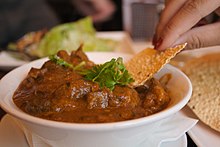
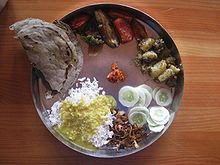
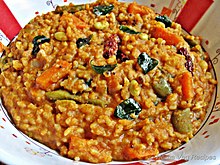

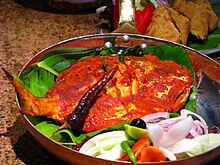

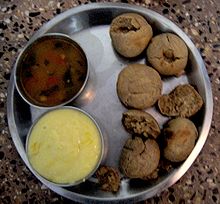
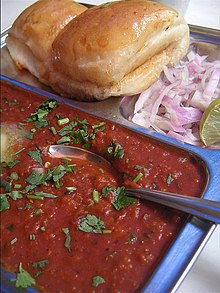





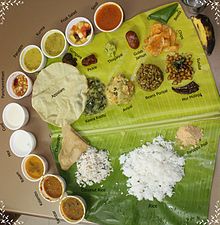


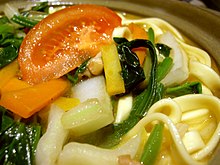
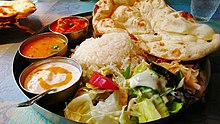
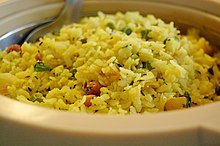



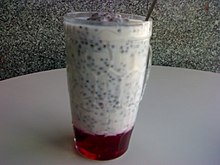
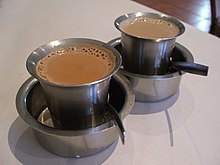
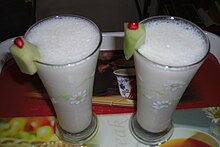


Comments
Post a Comment